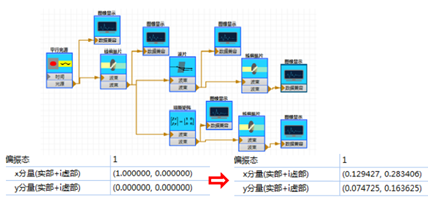The software uses a variety of transmission algorithms (including angular spectrum transmission, Optional transmission, Fresnel integral, Kirchhoff points and Rayleigh Sommerfeld points), Combined with a variety of partial differential equation solutions(including Longkuta algorithm, bidirectional PB algorithm, Fourier transformation algorithm, finite differential algorithm and spectral algorithm), and a variety of optimization methods (damping least square, analog annealing algorithm, genetic algorithm and neural network algorithm) to achieve powerful simulation capabilities in the optical field. The software supports flexible expansion of simulation models and can be customized. The software supports a wealth of data interface specifications for data interaction with software such as Matlab, Modtrans, Hitrans, and supports a variety of efficient computing systems for efficient parallel simulation.
SeeLight software covers seven categories, such as light source catalog, beam transmission catalog, Component catalog, detector catalog, target catalog, control catalog and auxiliary catalog, and has been widely used in geometric optics, atmospheric optics, information optics, laser optics, crystal optics and laser communication.
Applications:
Geometric Optics:
1£®Mirror imaging
2£®Lens imaging
3£®Refraction and reflection system imaging
Atmospheric Optics:
1£®Absorption, Scattering, Turbulence
2£®Containing deformation mirror and Hartman sensor AO system
Information Optics:
1£®Fourier optics
2£®Space filtering
Laser Optics:
1£®A variety of Gauss beam
2£®Coherent synthesis and incoherent synthesis
3£®Fiber laser
Crystal optics:
1£®Jones matrix
2£®Wave plate
3. Linear polarizer
4£®Birefringent crystal
Laser communications:
1£®Signal source
2£®Coding
3£®Modulation
4£®Demodulation
5£®Decoding
6£®Bit error rate
Basic function and features
1. Diverse algorithms: including a variety of transmission algorithms, a variety of partial differential equation solving methods, and a variety of optimization algorithms.
2. Rich catalogs: including light source catalog, target catalog, beam transmission catalog, control catalog, device catalog, detector catalog, auxiliary catalog and laser communication catalog, such as 9 categories of 111.
3. Simulation simplicity: graphical simulation platform, the use of component catalog can easily build optical systems and complete simulation.
4. Convenient interaction: the use of B/S architecture, as long as access to the browser can be simulated, support multi-user, multi-tasking at the same time.
5. Computing efficiency: supports multicore GPU or CUDA versions of GPUs parallel and multicore CPU parallel.
Software features£º
1. Graphical system simulation platform£»
2. Model system flexible expansion can be customized£»
3. Data protocol standards, rich and standardized interfaces£»
4. Support a variety of computing systems, automatic optimization of selection£»
5. A rich catalog of models covering geometry, atmosphere, information, laser, crystal and laser communications£»
6. A real atmospheric transport model with turbulence, absorption, scattering and halo effects£»
Typical case£º
Geometric optics - lens composition image
Information optics - 4f low pass filter

Crystal optics - Polarization analysis

Atmospheric optics - Sodium guide star system

Laser Optics - Fiber Lasers
|

